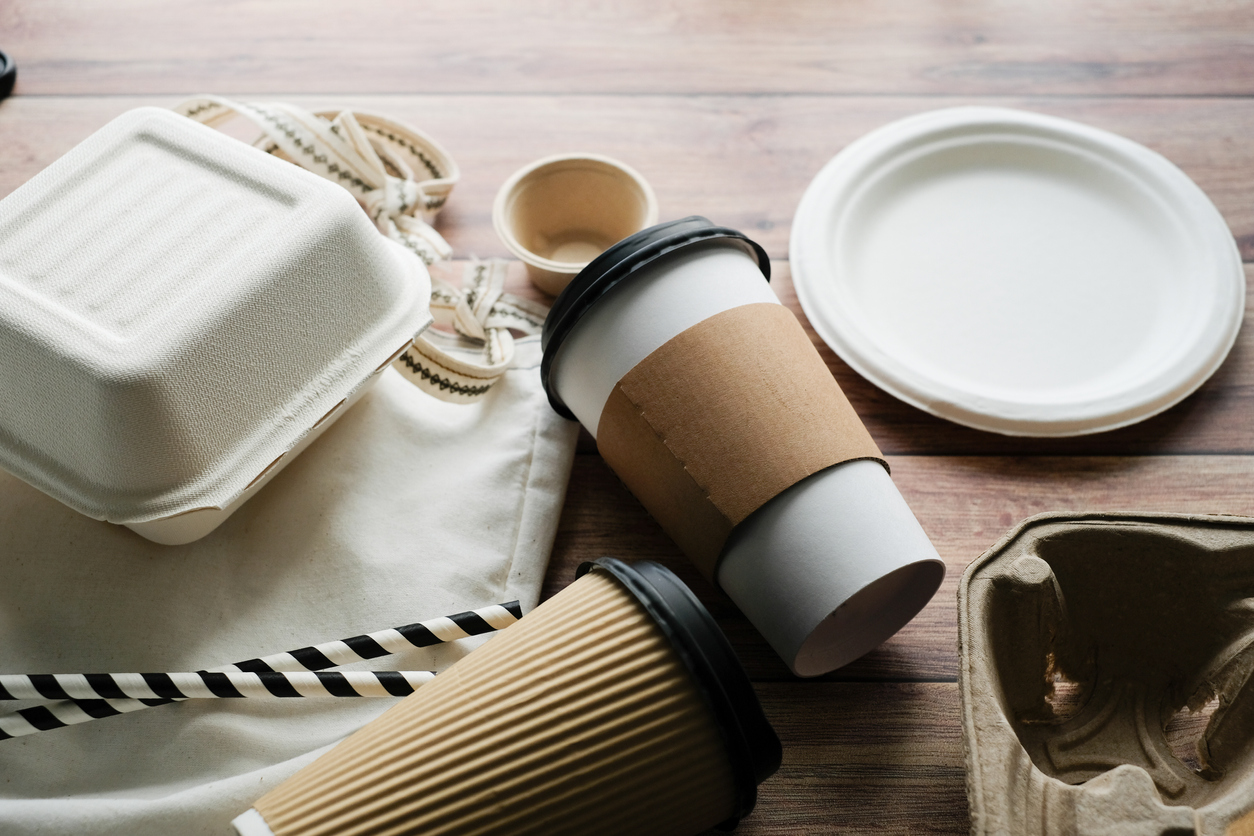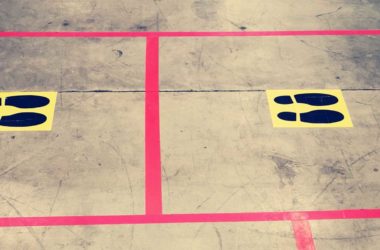At the end of 2023, the European Council of the European Union outlined a strategy for reducing packaging waste, which included introducing green packaging, deposit return schemes and reusable packaging. According to the council, the amount of packaging waste has increased by roughly 25% over the last decade and is expected to grow by another 19% by 2030 if no action is taken. Furthermore, it stated that each European citizen generated 190 kg of packaging waste in 2021. These are numbers that are not sustainable, which is why the council is trying to regulate this by proposing a multitude of answers. One of those solutions is to use more sustainable packaging. In this article, we’ll explore the ways in which green packaging can help limit its impact on the planet.
Why are Traditional Packaging Methods so Bad?
There are various reasons why traditional packaging methods are widely criticised. From greenhouse gas (GHG) emissions, to materials taking hundreds of years to break down. Here are a few of the main concerns with traditional packaging methods:
- Use of non-biodegradable materials – Much of the traditional food packaging, especially plastics, is non-biodegradable. This results in long-term pollution because these materials can take hundreds of years to break down.
- Greenhouse gas emissions – Greenhouse gases are produced during the manufacture, distribution, and disposal of conventional food packaging materials, which contributes to climate change.
- Waste accumulation – Traditional packaging ends up as litter or in landfills in large quantities. This build-up adds to air, water, and land pollution. As mentioned in the introduction, the amount of packaging waste generated is a significant environmental issue.
- Resource-intensive production – Traditional packaging materials are often produced using a lot of resources, such as fossil fuels and water. This consumption contributes to resource depletion and impacts the environment.
- Limited recycling options – Not all traditional packaging materials are recyclable, and even when they are, low recycling rates and inefficiencies in the recycling process can limit the effectiveness of recycling as a solution.
- Impact on marine life – Marine life may be harmed by plastic packaging that ends up in the ocean. Plastics can harm marine ecosystems and cause harm or even death to animals that consume them.
Why is Green Packaging Needed?
Green packaging is needed for a variety of environmental, economic and social reasons, and not least to align with governmental environment targets. Green packaging can help to protect the environment, reduce carbon emissions and conserve resources. In addition to this, it’s a much more sustainable way to package items than by using single-use materials, as it doesn’t exhaust the use of resources, and materials don’t take decades or even centuries to break down.
But it’s not just the environment that green packaging has a positive effect on. With more and more people adopting a more sustainable approach to buying products, green packaging can be an attractive selling point to customers who are mindful of their carbon footprint, which in turn can boost your brand image too. With regulatory compliance becoming stricter on the matter too, it might end up being more of a forced option, so it’s best to get a head start with it.
Types of Green Packaging
There are lots of types of green packaging. Here are some of the most common types:
Biodegradable Packaging
Over time, this kind of packaging can break down organically. This packaging does not need to decompose within a certain amount of time in order to be considered biodegradable. The fact that biodegradable packaging doesn’t leave behind dangerous pollutants is one of its main advantages.
Recyclable Packaging
Recyclable packaging refers to packaging materials that can be collected, processed, and remanufactured into new products after they have been used. This process diverts waste from landfills, conserves resources, and reduces environmental impact.
Reusable Packaging
Reusable packaging refers to packaging solutions designed for multiple uses, as opposed to single-use packaging. This type of packaging is an integral part of sustainable practices, aiming to reduce waste and environmental impact. Examples of reusable packaging include reusable bags, refillable containers, reusable coffee cups and reusable lunch boxes.
Eco-friendly Packaging
This type of packaging refers to packaging which is recyclable, made from recycled materials, doesn’t contain pollutants and chemicals which could harm the environment or customer and sources, transports and produces the materials using renewable energy.
The Use of Biodegradable Materials in Green Packaging
In the quest for environmental sustainability, biodegradable materials are leading a significant transformation in the packaging industry. Unlike conventional packaging that lingers in landfills for centuries, biodegradable options offer a promising solution by decomposing naturally and reducing ecological footprints.
Biodegradable packaging is derived from natural materials like plants, paper, and even some bioplastics. These materials are designed to break down efficiently under natural conditions, facilitated by microorganisms, humidity, and sunlight. Key materials include polylactic acid (PLA) made from fermented plant starch, plant fibres, and biodegradable films derived from natural polymers.
Types of Biodegradable Packaging
Bioplastics
Bioplastics have a very similar appearance, feel, and functionality to regular plastics because they are made from sugars that are extracted from corn and sugarcane. When this material reaches the end of its life cycle, carbon dioxide and water can break it down. Consequently, it reduces your carbon footprint and makes the packaging environmentally friendly.
Starch-based Packaging
This includes materials used in packaging that are made from different types of natural starches, like tapioca, potato starch, or cornflour. These materials frequently take the place of conventional polystyrene foam peanuts in loose-fill packaging.
Mushroom Packaging
Mycelium, the root structure of mushrooms, is cultivated around agricultural waste to create this innovative material. It serves as a sustainable substitute for plastic and Styrofoam in cushioning and insulation applications.
Cellulose Packaging
Cellulose is a thin, translucent and fully biodegradable film or sheet which derives from wood pulp and other plant fibres. It is often used for transparent films or bags.
Paper
Cellulose fibres, which are mostly derived from wood, a naturally occurring and renewable resource, are used to make paper. Paper’s organic origins make it susceptible to degradation by ambient microorganisms. It is a common substitute for plastics in modern packaging.
The Use of Edible Packaging in Green Packaging
In the field of sustainable packaging, edible packaging is a game-changer, providing a creative way to cut waste. It is an environmentally friendly substitute for conventional packaging techniques because it is made of consumable materials and can be eaten in addition to being used as packaging.
A variety of food-grade materials, such as proteins, lipids, and polysaccharides, are used to make edible packaging. These substances are safe to eat and are frequently sourced from organic materials like plants and seaweed. Edible packaging comes in a variety of forms, such as films, coatings, and even moulded forms.
Types of Edible Packaging
Seaweed-Based Films
Made from seaweed extract, these transparent films serve as a healthy substitute for plastic wrap when used to package food. They can dissolve in water and have no taste.
Rice Paper
Commonly used in Asian cuisine, rice paper is edible and can be used to wrap foods, offering a biodegradable and edible packaging solution for snacks and candies.
Edible Cutlery
Made from wheat bran, rice, or sorghum, edible cutlery is an alternative to single-use plastic utensils and is therefore part of a larger strategy to reduce packaging waste, even though it is not a packaging material per se.
Milk Protein (Casein) Films
These are edible films made from casein, a protein found in milk. They are often used to wrap cheese or as a layer in food packaging to prevent oxygen from reaching the food, extending its shelf life.
Edible Water Pods
An inventive replacement for plastic bottles, these seaweed-derived pods can hold water or other liquids.
Real-world Examples of Green Packaging
Notpla, a packaging solutions company, offers green packaging for various applications including food containers, laundry sachets, ocean paper, vanishing bath oil sachets and much more. The video below shows how the company uses edible and biodegradable packaging options for a more sustainable, zero waste alternative to traditional packaging methods.
Another company called Evocative Design is also trying to do its part in saving the planet. Their mushroom packaging is made with two ingredients – hemp hurd and mycelium. After shipping the packaging can be broken up and sprinkled over a garden bed, where it composts. This type of packaging uses minimal resources and contains no artificial chemicals.
Challenges and Considerations for Green Packaging
Although green packaging offers a wealth of benefits and is clearly a great option for the environment, there are still some challenges that it faces. Some of these include:
- Higher production costs – producing green packaging materials can be more costly than producing traditional materials, particularly if new or intricate manufacturing techniques are needed.
- Durability and performance – Certain environmentally friendly packaging materials might not be as strong and protective as traditional packaging materials, which could cause deterioration or damage to the product. Ensuring that green packaging can maintain the shelf life of products, especially perishable goods, is also a crucial consideration.
- Supply Chain and Logistics:
- Availability of Raw Materials: Finding sustainable materials on a large scale can be difficult, particularly if they are hard to come by or if demand exceeds supply.
- Adaptation of Existing Infrastructure: Integrating green packaging into existing production lines and distribution chains can require significant adjustments.
Future Innovations for Green Packaging
Green packaging is a rapidly developing field that is being driven by consumer demand for sustainable products, environmental concerns, and technological advancements. The following are some prospective advancements in green packaging that are either in the process of being developed or have great promise:
- Advanced bioplastics – Efforts are being made to create novel bioplastics that possess comparable strength and adaptability to conventional plastics. These could include bioplastics made from algae, fungi, or even bacterial processes.
- Smart and active packaging – Incorporating smart technologies into packaging to extend shelf life, improve safety, and reduce food waste. This could include packaging that changes colour to indicate freshness or packaging that actively combats spoilage. For more information on smart packaging, check out our article.
- Plantable packaging – Packaging that contains seeds that can be planted after use is known as plantable packaging. This kind of packaging has an additional ecological benefit in that it helps to grow new plants in addition to decomposing. Plantable packaging is expected to be very popular within the next decade, achieving a market compound annual growth rate (CAGR) of 11%.
Conclusion
Green packaging is certainly a viable and effective solution to the growing environmental concerns caused by traditional packaging methods. By using biodegradable and edible materials, less waste is created, minimal resources are used, and materials don’t pollute the planet for years-on-end. Despite some challenges obstructing a clear route for widespread adoption of green packaging processes, these are certainly surmountable. What’s more, with regulatory compliance becoming stricter, and government environment targets becoming more ambitious, green packaging seems like it might be a must in the near future, rather than a nice-to-have.











